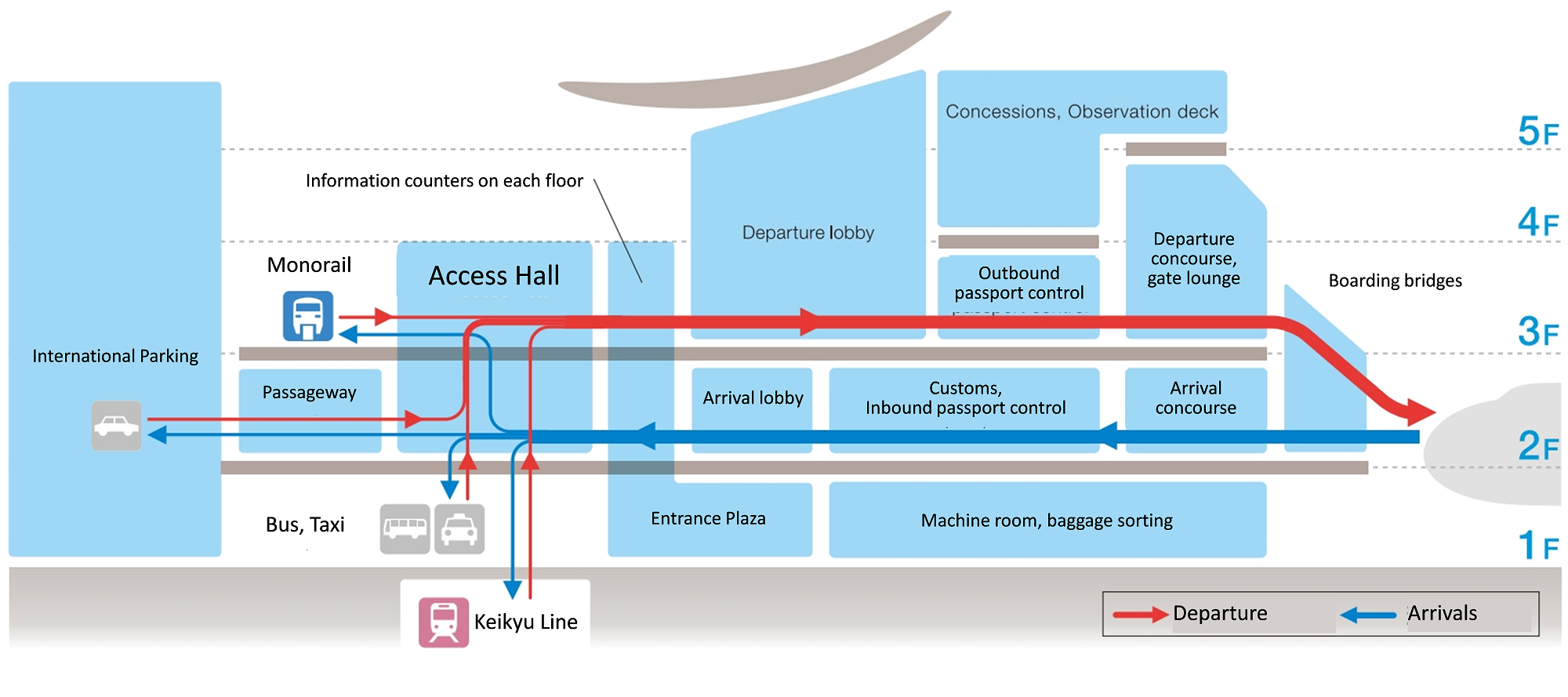

The design of the airport itself is half of the success equation - how to ensure seamless door-to-door travel experience for various people including the elderly and disabled is a key. Haneda International Airport Terminal is directly connected to the city’s major urban centers by two railway companies. When the new terminal and stations were built, TIAT and these two railway companies collaborated to get rid of physical barriers across facilities for people with mobility disadvantages. For example, a hall in the terminal allows passengers to directly access to departure/arrival lobbies, public transportation services (e.g., Monorail, railway, buses, and taxies) and a car parking area via flat and straight paths. Several large-size elevators set in the station can also carry a large volume of passengers between the platforms and the arrival/departure floors. A railway line redirected the guideway from the existing platform at the domestic terminal to the second floor of the international terminal to produce flat passenger access from the station to the departure lobby. In addition, the both railway lines introduced movable step boards that bridge train vehicles and platforms for wheelchair users, and platform screen doors for passengers’ safety.
-
Coordination of facility design with railway companies providing access to the airport
Integrated access design between an airport terminal, ground transportation systems, and urban centers is critical for travelers with disabilities. In particular, it is essential to eliminate all types of level differences and floor gaps that can cause stress and hamper passengers from having seamless door-to-door travel experiences. Incorporating a centralized hall into the terminal benefits all users, as it enables smooth transfers among different transportation modes with barrier-free paths and, in turn, mitigates pedestrian congestion at airports.